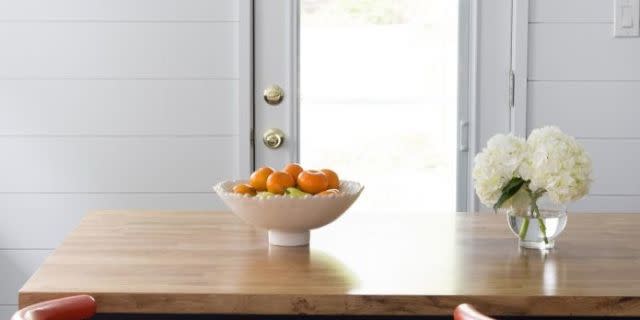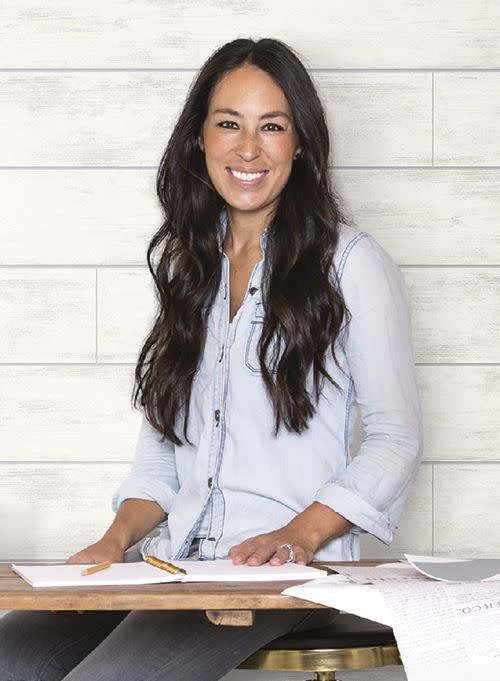The Fascinating Story Behind Joanna Gaines's Beloved Shiplap

Utter the word "shiplap" today, and one very specific person springs to mind: Joanna Gaines, the renovation phenom and flea market enthusiast who-along with her goofy, doting husband, Chip-put Waco, Texas, on the map with transformations of dilapidated buildings into rustic-chic farmhouses on the HGTV show Fixer Upper.
After five seasons of the show (which left the air last year), shiplap has cemented itself in the modern design lexicon as the cornerstone of a certain kind of Instagram-ready, nouveau-farmhouse decor. The Gaineses themselves have profited off of this trend, shilling their own line of the stuff through their Magnolia Home collection at Home Depot, as well as on their own ecommerce site.
But alas, shiplap did not begin with Joanna-or even with interiors, for that matter. "It was originally used in the maritime industry," explains Jamie Hammel, founder of wood mecca The Hudson Company. What made it ideal for this application is a specific joint, which sets shiplap apart from other types of siding: The rabbet, a specific notch that joins boards together.
"The rabbet joint on opposing boards, when overlapped, was watertight enough for the construction of ship hulls," Hammel says. The result is a more tightly sealed version of a similar (and more continually popular) siding: Clapboard, whose overlapping pieces were originally used on barn exteriors to resist water.
Even when it made the move inside, shiplap of the past was hardly a decorative element, explains Hammel. "When shiplap made it to interiors, it was not intended to be exposed or showcased," he points out. "Instead, prior to plywood, shiplap planking was often used as sheathing and then covered with fabric, wallpaper, or even muslin."

So, we may well have Jojo to thank for the adoption of the material as one to be showcased (and Pinned to oblivion)-or, at least, the popularization of it. A Google Trends history of the term in search is pretty telling: As far back as 2004, the word saw little to no Googling; in 2013, the year Fixer Upper debuted, it was still pretty low, but once the show found its footing (and fan base) in 2014, it began climbing, until peaking in February 2016 and maintaining a choppy, but steadily upward trend from then on. Graphs of the search volume for "Joanna Gaines" and "Fixer Upper" follow a tellingly parallel path. With the show off the air-at least until the couple's network debuts-it will be interesting to see if the trend subsides.
Follow House Beautiful on Instagram.
('You Might Also Like',)

